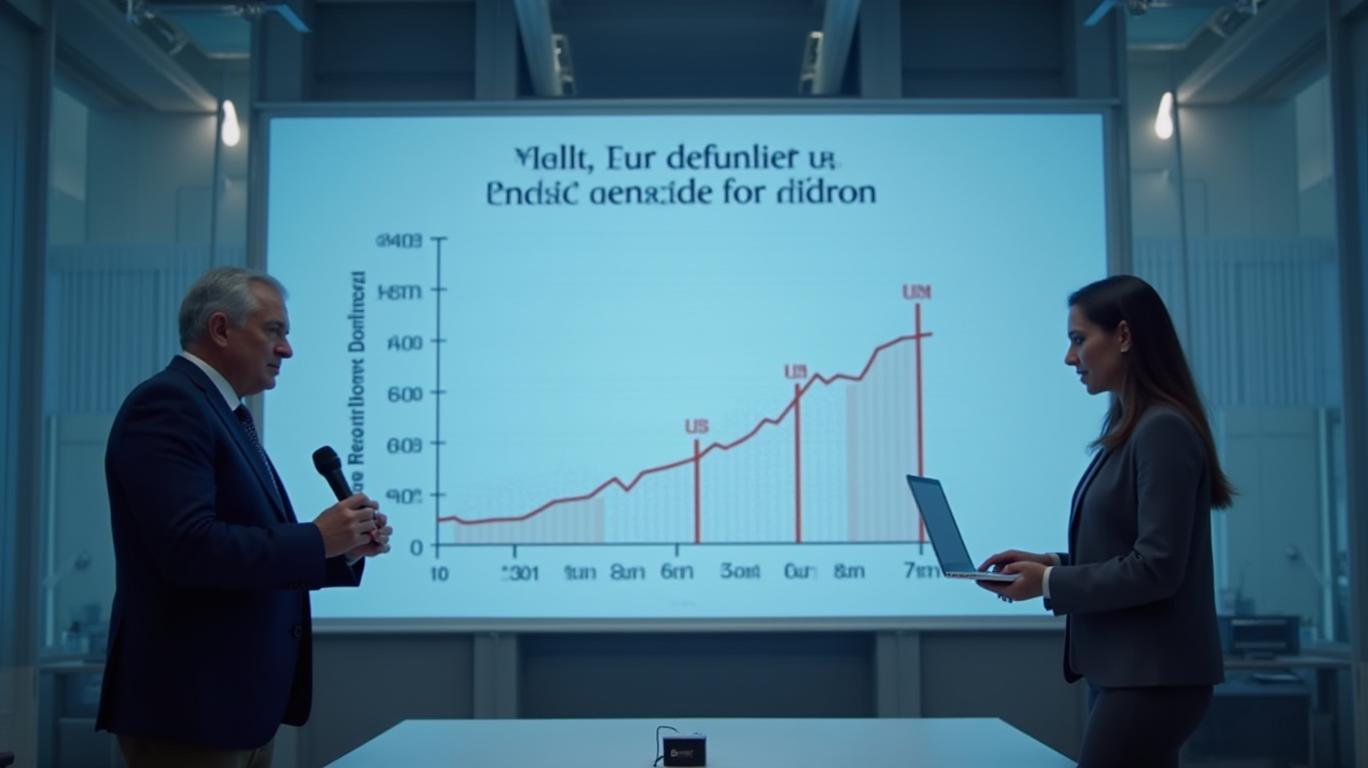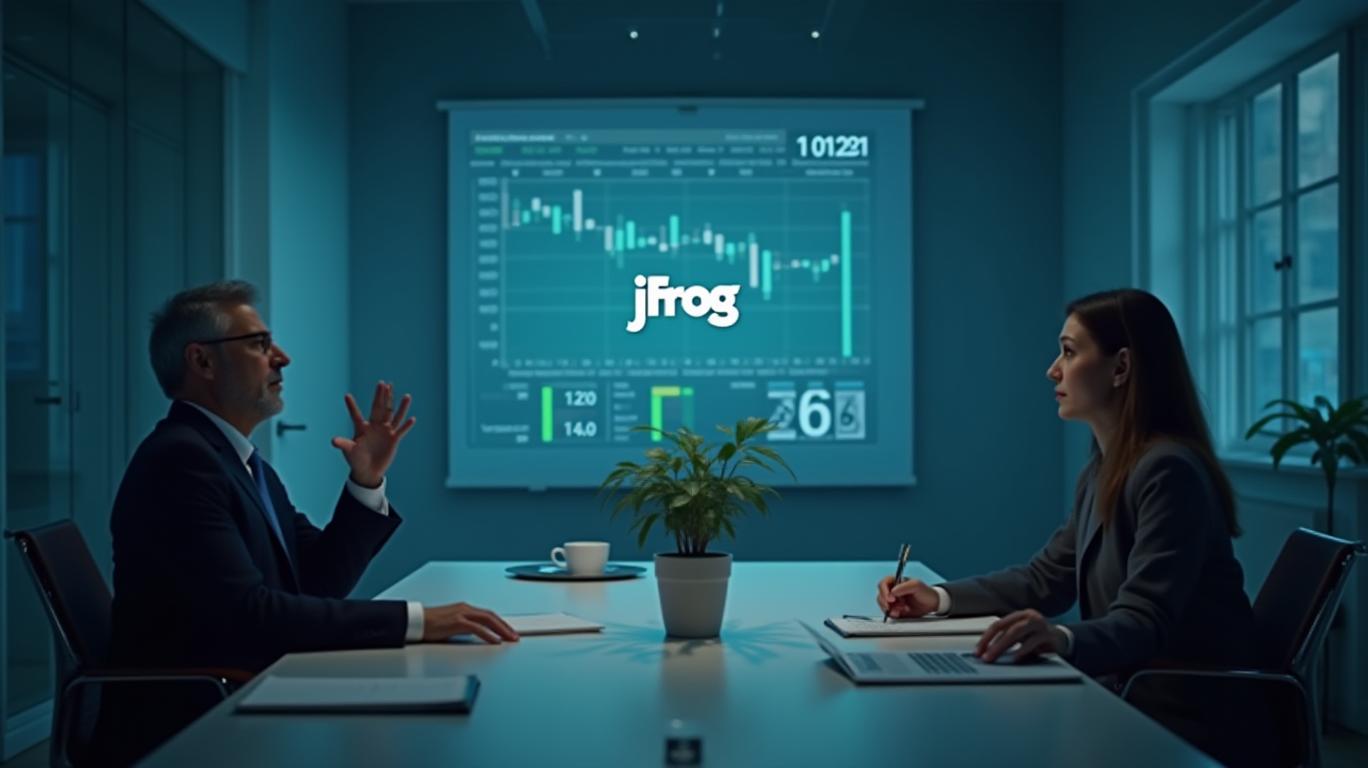JFrog’s Q1 Surge: Strong Earnings, Cloud Momentum, and a Revised Growth Path
JFrog (NASDAQ: FROG) delivered a robust Q1 2025 performance, exceeding Non-GAAP earnings expectations while accelerating its transition to a cloud-first software supply chain leader. The results underscored the company’s ability to balance growth and profitability, even as it faces macroeconomic headwinds. With cloud revenue surging 42% year-over-year and a revised full-year EPS guidance, JFrog’s trajectory suggests it is capitalizing on the demand for end-to-end DevOps and MLOps solutions.
Financial Highlights: Profitability and Liquidity Strength
JFrog’s Q1 Non-GAAP diluted EPS of $0.20 beat estimates by 21.5%, while Non-GAAP net income rose 29.4% to $23.3 million. Gross margin held steady at 82.5%, despite a strategic shift toward higher cloud revenue (now 43% of total revenue), which typically carries lower margins than self-hosted products. Operating income hit $21.4 million, with a 17.4% operating margin, reflecting disciplined cost management.
Ask Aime: How did JFrog's Q1 2025 performance influence its stock price?
Cash generation remained healthy, with $28.1 million in free cash flow, and total liquidity of $563.5 million, providing a buffer against economic uncertainty.

Growth Drivers: Cloud Dominance and Customer Loyalty
The $52.6 million in cloud revenue (up 42% YoY) was a standout, driven by adoption of its full-stack jfrog Platform Enterprise+ subscriptions, now contributing 55% of total revenue. Customer metrics reinforced this momentum:
- Customers with >$1 million ARR: Increased 35% YoY to 54, signaling strong retention and expansion of high-value accounts.
- Net dollar retention rate: Held at 116%, indicating customers are increasing spend over time.
- ARR >$100K customers: Rose 15% to 1,051, diversifying revenue streams.
JFrog’s platform is now critical infrastructure for 82% of Fortune 100 companies, underpinning its "land-and-expand" strategy. New offerings like JFrog ML for MLOps further position it to capture AI-driven software development trends.
Ask Aime: "JFrog's Q1 2025 earnings surprise, what's next for their stock?"
Guidance: Caution Amid Strength
While JFrog maintained its full-year 2025 revenue guidance of $502.5 million (midpoint), it slightly raised its Non-GAAP EPS outlook to $0.69, exceeding analyst expectations by 2.1%. The company remains cautious about macroeconomic pressures, particularly in enterprise spending. However, its revised guidance reflects confidence in cloud adoption and platform scalability.
Risks and Challenges
Despite the positives, risks linger. The 13.2% year-to-date stock decline (closing at $35.26) suggests investors remain skittish about tech spending. Gross margin compression, from 85.1% in Q1 2024 to 82.5% in Q1 2025, also signals margin pressure as cloud revenue grows. Competitors like Docker and HashiCorp are intensifying the race for DevOps tools, while macroeconomic uncertainty could delay enterprise upgrades.
Conclusion: A Strong Foundation, but Challenges Ahead
JFrog’s Q1 results paint a compelling picture of a company executing its cloud-first strategy effectively. With $502.5 million in revenue guidance and a 43% cloud revenue mix, it is well-positioned to capitalize on the $15 billion software supply chain market. Key metrics like the 116% net retention rate and $424.2 million in remaining performance obligations suggest recurring revenue streams are solidifying.
However, margin pressures and macroeconomic risks mean JFrog must continue to innovate. Its MLOps focus with JFrog ML could differentiate it in the AI era, but execution is critical. Investors should monitor gross margin trends and enterprise contract renewals.
In summary, JFrog’s Q1 performance validates its transition to a cloud-driven software leader. While challenges remain, its strong balance sheet, customer loyalty, and strategic investments make it a compelling long-term play in the software supply chain space.


_cbf77e8c1748017079428.jpeg)






